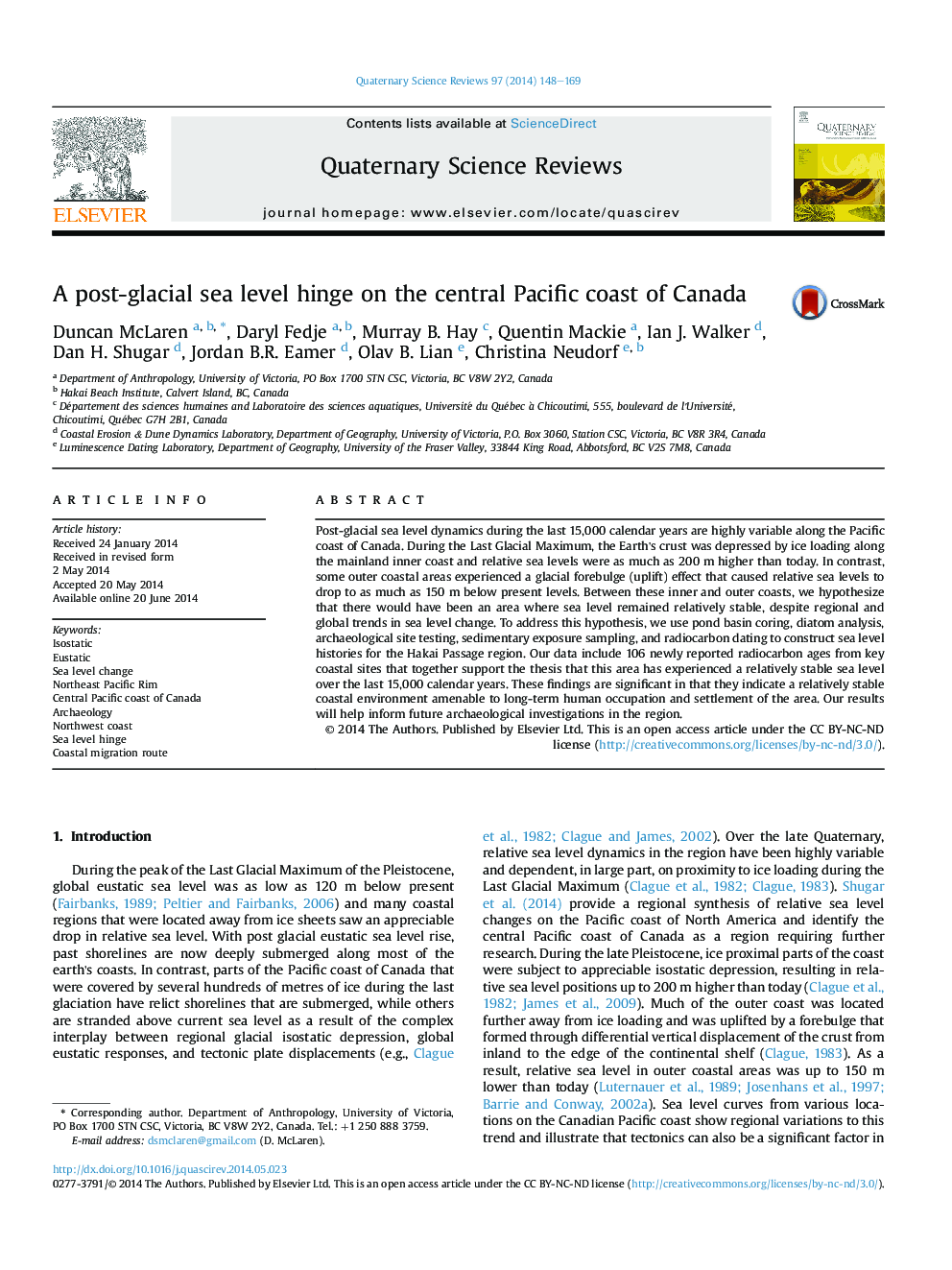| Article ID | Journal | Published Year | Pages | File Type |
|---|---|---|---|---|
| 6445678 | Quaternary Science Reviews | 2014 | 22 Pages |
Abstract
Post-glacial sea level dynamics during the last 15,000 calendar years are highly variable along the Pacific coast of Canada. During the Last Glacial Maximum, the Earth's crust was depressed by ice loading along the mainland inner coast and relative sea levels were as much as 200Â m higher than today. In contrast, some outer coastal areas experienced a glacial forebulge (uplift) effect that caused relative sea levels to drop to as much as 150Â m below present levels. Between these inner and outer coasts, we hypothesize that there would have been an area where sea level remained relatively stable, despite regional and global trends in sea level change. To address this hypothesis, we use pond basin coring, diatom analysis, archaeological site testing, sedimentary exposure sampling, and radiocarbon dating to construct sea level histories for the Hakai Passage region. Our data include 106 newly reported radiocarbon ages from key coastal sites that together support the thesis that this area has experienced a relatively stable sea level over the last 15,000 calendar years. These findings are significant in that they indicate a relatively stable coastal environment amenable to long-term human occupation and settlement of the area. Our results will help inform future archaeological investigations in the region.
Related Topics
Physical Sciences and Engineering
Earth and Planetary Sciences
Geology
Authors
Duncan McLaren, Daryl Fedje, Murray B. Hay, Quentin Mackie, Ian J. Walker, Dan H. Shugar, Jordan B.R. Eamer, Olav B. Lian, Christina Neudorf,
